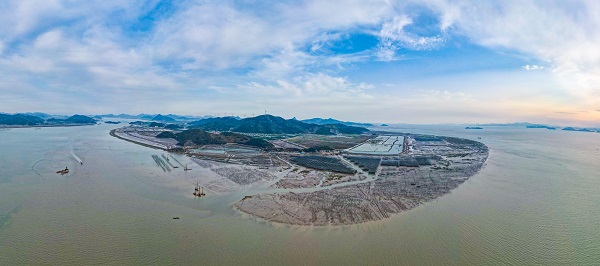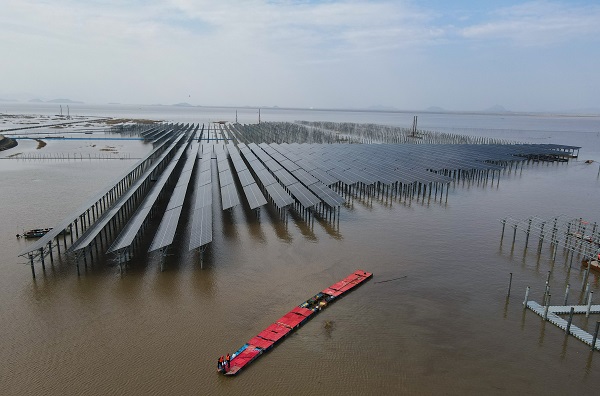China Datang promotes the country’s largest coastal tidal flat photovoltaic project under construction

According to China's photovoltaic industry construction plan, a large area of wasteland such as beaches with extremely low utilization will be used for the construction of photovoltaic power plants. China Datang firmly grasps the development opportunities, and makes every effort to develop large-scale tidal flat photovoltaic projects in Zhejiang, promote energy conservation, emission reduction and sustainable economic and social development, and help achieve the goal of "carbon peak and carbon neutrality".
Located on the west side of Changdatu seawall in Xiangshan County, Ningbo City, Zhejiang Province, a tidal flat photovoltaic matrix with an area of about 4,516 mu, which actively responds to the country’s “carbon neutrality and carbon peaking”, has grew and taken shape. The project under construction is China Datang Changdatu Photovoltaic Project. With a total installed capacity of 300MW, it is currently the largest coastal tidal flat photovoltaic project under construction in China.

“This is CDT’s first tidal flat photovoltaic project. During the construction, we constantly learned from our experiences and make innovations. We have mastered a set of relatively mature construction methods. The application of new technology and new craft helps increase the construction efficiency." The person in charge of the project said. Zou Lei, Chairman of CDT, has expressed that the people in China Datang have the courage, wisdom, and ability to overcome any difficulties and obstacles. China Datang has the potential, tenacity, and hope to become "first-class in the power industry".

China Datang always stresses the importance of combining development with ecological protection while developing projects. The upper layer of the Changdatu Photovoltaic Project generates electricity and the lower layer is used for breeding a wide range of seafood such as oysters and crabs. It is an exploration of combining fishery and PV, which significantly improves the comprehensive utilization value of the tidal flat. It is also closely integrated with the local island and rural tourism development plan.?
Once completed, Changdatu photovoltaic project can provide an average of about 330 million kilowatt-hours of electricity to the grid every year, save 100,000 tons of standard coal, reduce emissions of 270,000 tons of carbon dioxide, 2,300 tons of sulfur dioxide, and 1,000 tons of nitrogen oxides each year. While meeting regional power demand, the project can speed up the adjustment of local energy structure, promote energy conservation, emission reduction and sustainable economic and social development.(photos provided by?Changdatu?PV Project Department)


